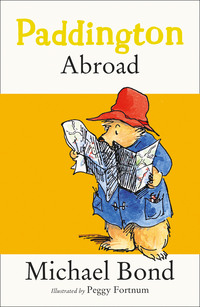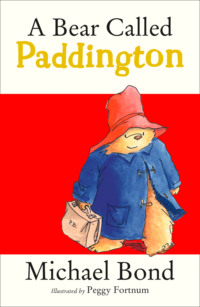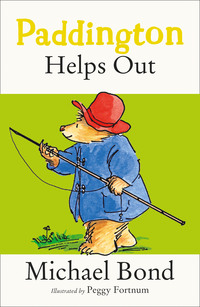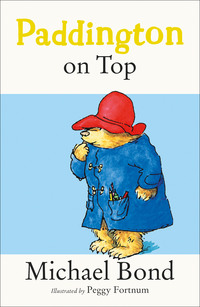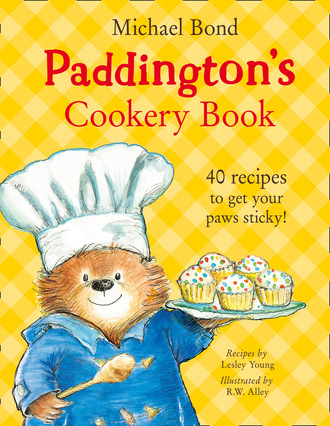
PADDINGTON’S COOKERY BOOK

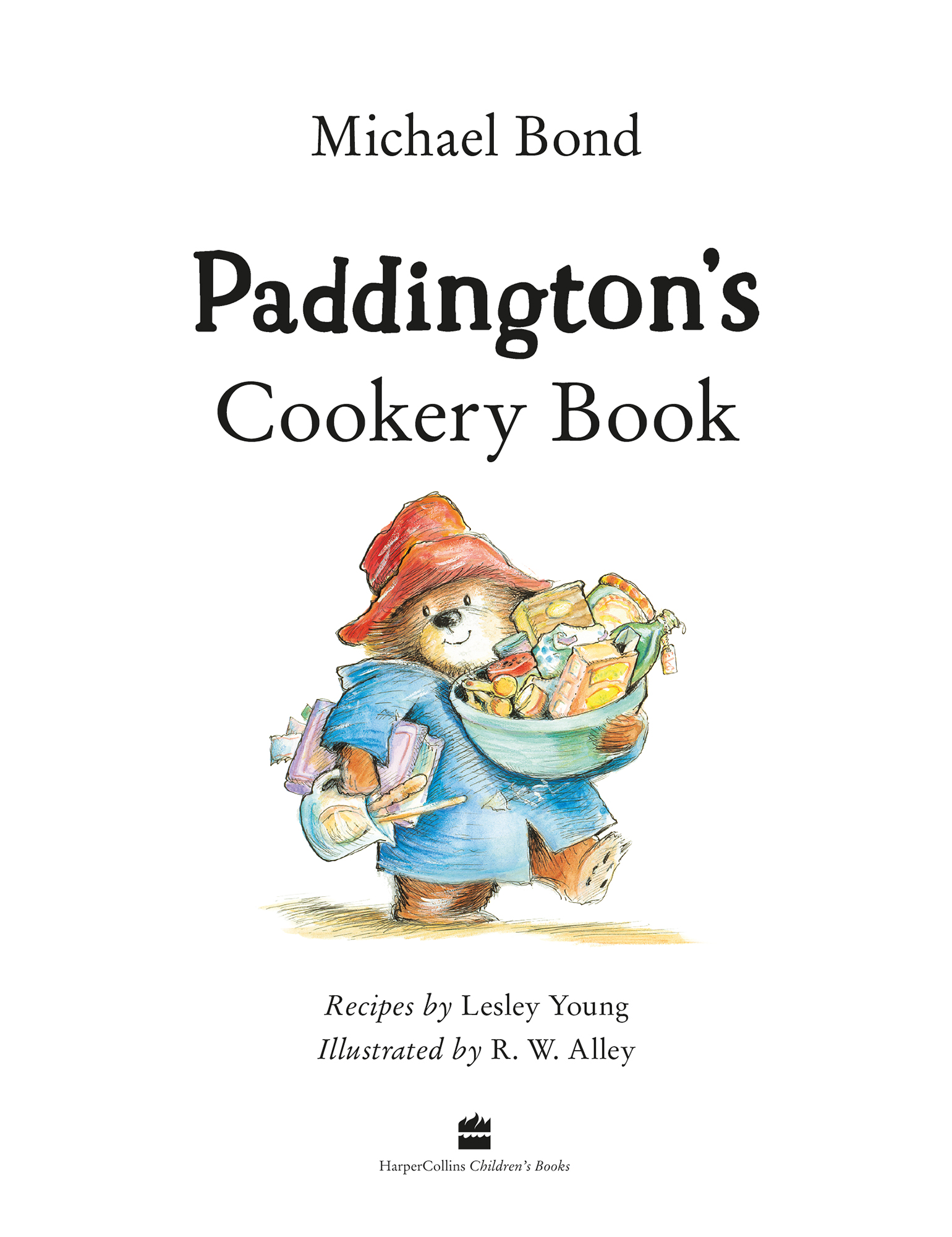
Copyright
For more Paddington books, activities, games and fun visit:
www.paddingtonbear.com
First published in hardback in Great Britain by HarperCollins Children’s Books in 2011
This edition published in 2020
Text copyright © Michael Bond 2020
Recipes copyright © HarperCollinsPublishers Ltd 2011
Illustrations copyright © R. W. Alley 1998, 1999, 2011
Photographs copyright © HarperCollinsPublishers Ltd 2011
SOURCE EDITION ISBN-13: 978-0-00-742367-5
Ebook Edition © 4 June 2020 ISBN: 978-0-00-746941-3
Version: 2020-06-04
HarperCollins Children’s Books is a division of HarperCollinsPublishers Ltd.
Michael Bond and R. W. Alley assert the moral right to be identified as the author and illustrator of the work respectively. All rights reserved under International and Pan-American Copyright Conventions. By payment of the required fees, you have been granted the non-exclusive, non-transferable right to access and read the text of this ebook onscreen. No part of this text may be reproduced, transmitted, downloaded, decompiled, reverse engineered, or stored in or introduced into any information storage and retrieval system, in any form or by any means, whether electronic or mechanical, now known or hereinafter invented, without the express written permission of HarperCollins ebooks, 1 London Bridge Street, London SE1 9GF.
Visit our website at: www.harpercollins.co.uk
Contents
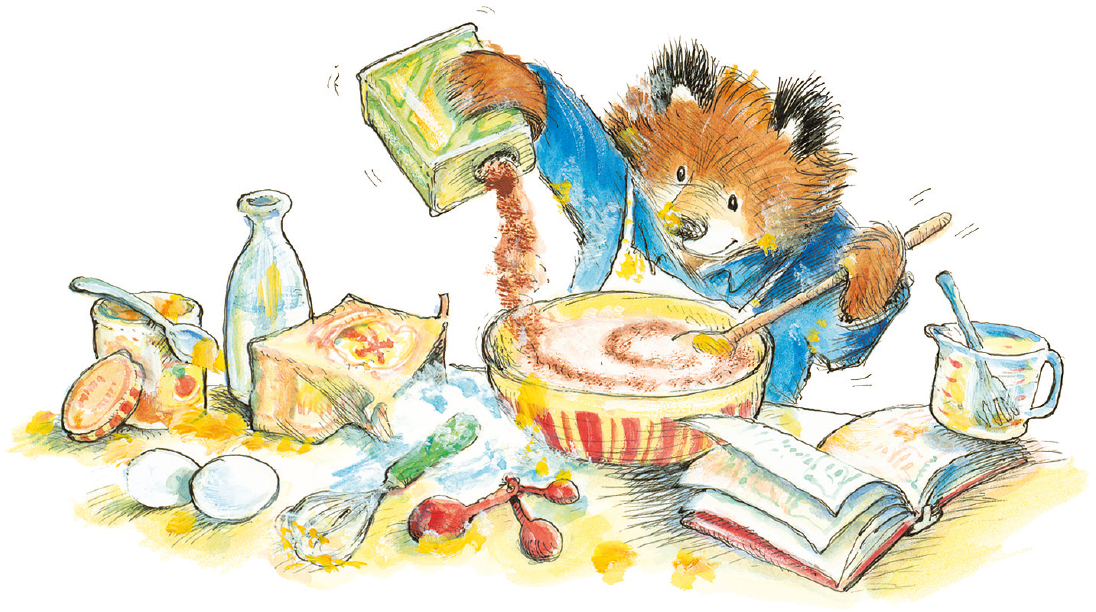
Cover
Title Page
Epigraph
Safety in the Kitchen
Introduction by Michael Bond
Foreword by Paddington
Breakfast
Elevenses
Portobello Road
Aunt Lucy’s Corner
Lunch and Evening Meals
Puddings
Summer Holidays
Paddington’s Christmas Birthday Party
List of Recipes
Index
Copyright
About the Publisher
Safety in the Kitchen
Mrs Bird is in charge of the Browns’ kitchen at number 32 Windsor Gardens and she runs what Mr Brown calls a tight ship. Although she is always grateful when anyone offers to help, she has a strict set of rules:
1. Before starting work, wash your hands or paws thoroughly.
2. Children must always have a grown-up to help them – essential when they are using a sharp knife, handling anything hot or using a food processor.
3. Make sure all pot handles point towards the wall in case you knock into them by mistake and spill the contents.
4. Never leave frying pans or saucepans on the heat unattended.
5. Always wear oven gloves when you are putting things in and taking things out of the oven.
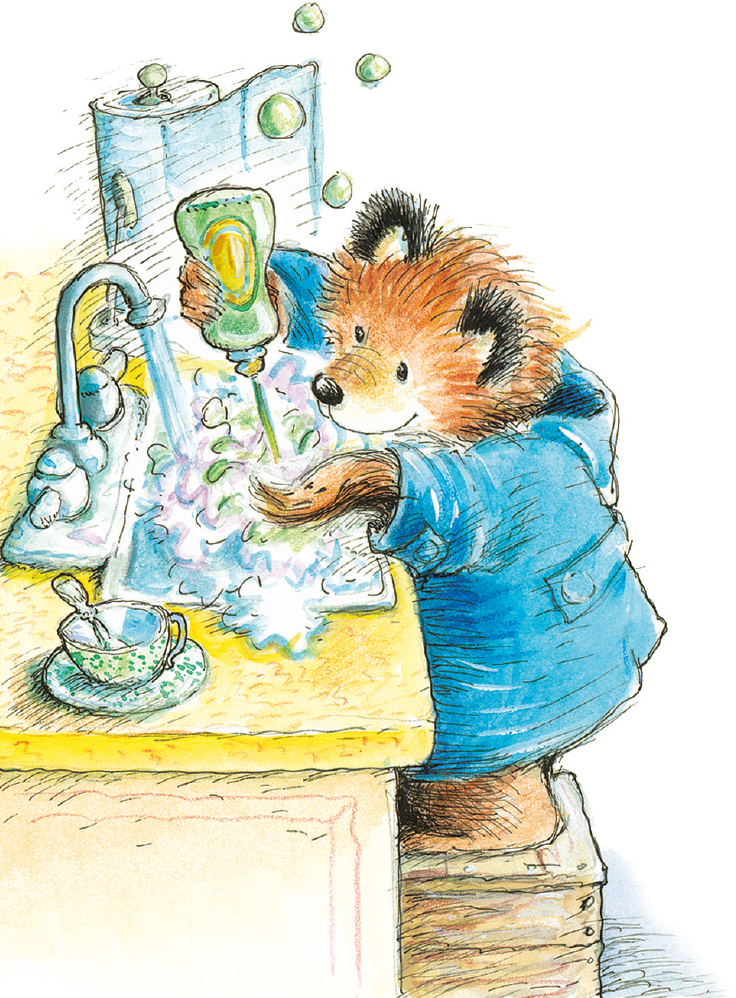
“I bet it’s got marmalade in it,” said Jonathan.
“Paddington’s things always have marmalade.”
Paddington Abroad
Introduction by Michael Bond

A great many books have been written about food, and it would be a very lowly bookshop indeed that didn’t have a section devoted to the subject. Most of them have been written by chefs, which is not so surprising. They come and go like the weather.
But one of the longest lasting of all time is the work of a French lawyer who never went near a stove in his life if he could possibly help it, and yet he ended up having a cheese named after him as a token of respect. He achieved worldwide fame and it is even said he introduced scrambled eggs to America when he fled there during the French Revolution.
His name was Jean Anthelme Brillat-Savarin, and his most famous book, The Physiology of Taste, was published in December 1825, two months before he died.
He was a master of the quotable phrase, and one of my favourites is, “Tell me what you eat, and I will tell you what you are.”
I often wonder what conclusions he would have reached had he come across one of Paddington’s marmalade sandwiches.
“A strong sense of right and wrong; well meaning, but accident-prone; drives a hard bargain; has a liking for anything new, but is careful with his money; one of nature’s bachelors; fond of marmalade; painstaking…”
I say that because Monsieur Brillat-Savarin never married and he was satisfied with the simplest of dishes, provided they were made with style. He would have been most impressed by the way Paddington arranges his chunks. Like his old bush hat, it is a gift that has been handed down and is not given to many.
Michael Bond
London
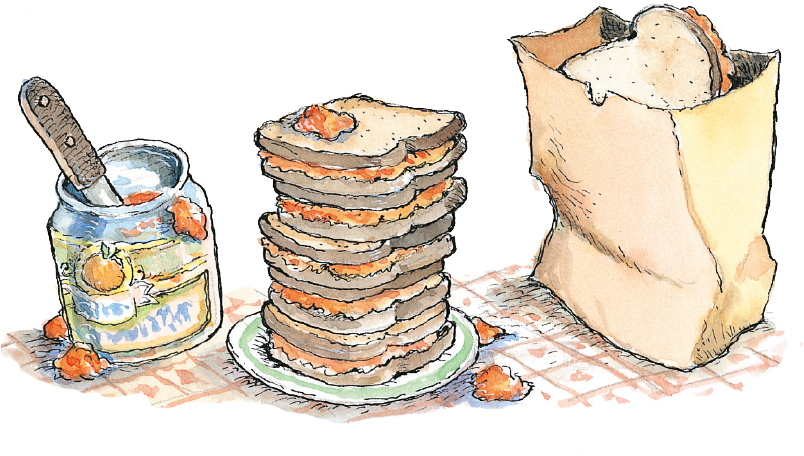

Foreword by Paddington
When I read Michael Bond’s introduction telling how someone called Mr Brillat-Savarin had a cheese named after him, I couldn’t help wondering which kind of cheese might go with my name. It kept me awake several nights running. Then my best friend, Mr Gruber, brought me back down to earth.
“First of all, Mr Brown,” he said, “you will need to write a book. Mind you,” he added, “you never know what you can do until you try.”
He went on to point out that eating isn’t simply a matter of keeping body and soul together. “A lot of people aren’t lucky enough to have three meals a day,” he said. “But if they are, it adds up to over a thousand meals each year of their life, so it is only sensible to make sure they enjoy them, otherwise it is a terrible waste.”
And then, much to my surprise, Mrs Bird offered to give me cookery lessons. (I think Mr Gruber may have had a word with her on the quiet.)
First of all she found a special wooden box for me to stand on, and then she gave me one of her old aprons to wear in case I got stains on my duffle coat.
And because she has strong views on the old argument as to which came first – the chicken or the egg – she suggested we start with eggs. Mrs Bird is very keen on eggs. She thinks they are the most useful item of food in anyone’s larder.
It just so happened that only the other day I had been reading about a town in France called Bessières. Every year they celebrate Easter by making an omelette from more than 12,000 eggs. It sounded a very good idea.
Mrs Bird gave one of her snorts. “They would,” she said. “But in cooking you must learn to walk before you can run. Besides, I don’t have a big enough pan for that kind of thing.”
“They have one which is over four metres wide,” I said. “It fills the town square.”
“Well, there you are,” said Mrs Bird. “But we are not talking about making an omelette. I grant you trying to scramble one egg is a waste of time, so we will start off with two, which isn’t as easy as it might sound.”


Breakfast
Omelettes come in various sizes, but among the biggest ever must be one that was made in France for Napoleon Bonaparte.
The emperor was leading his army back to Paris from the south of France when they stopped in Bessières for a night’s rest. The next morning he so enjoyed an omelette he was given for breakfast that he ordered the innkeeper to make one large enough to feed his whole army, and the event has been celebrated annually ever since.
It brings it all to life. I can see now why Mrs Bird wouldn’t want one that size in her kitchen.

Scrambled Eggs
Serves 1
You will need:
bowl
fork
non-stick frying pan
knife
wooden spoon
Ingredients:
2 large fresh eggs
salt and pepper
25g (1oz) butter
What to do:
Break the eggs into the bowl. Add a pinch of salt and some freshly ground pepper.
Whisk with the fork for just a minute to break up the yolks and whites.
Put the pan on a medium heat. When it is hot, add about two-thirds of the butter and swirl it round until it is melted and just on the point of foaming.
Add the eggs. Stir with the wooden spoon – round the sides and into the middle – until the eggs form fat, soft curds and are almost cooked.
Now take the pan off the heat, add the rest of the butter, and keep stirring. The eggs will continue to cook in the heat from the pan, but will not be dry and overcooked.
Season lightly with salt and pepper and serve at once on hot, buttered toast.
MRS BIRD’S TIP: Make sure the heat is evenly distributed to the mixture at all times and don’t be in too much of a hurry.
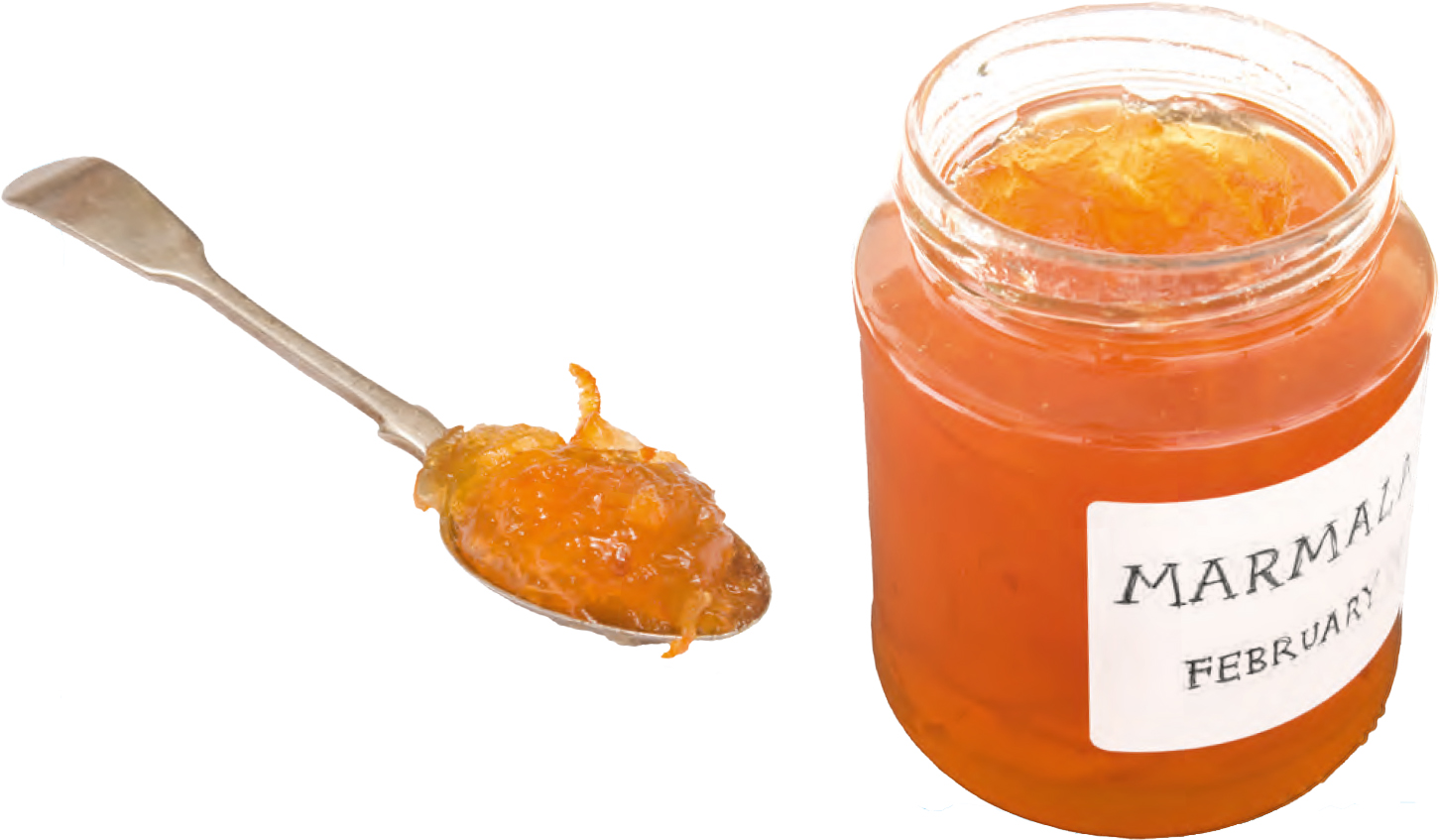
Marmalade
Mrs Bird always says if you don’t follow the instructions in a recipe you only have yourself to blame if it doesn’t work, so make sure you read the list of ingredients carefully or, as in my case… listen.
I say that because when I offered to do the shopping for Mrs Bird I thought she wanted several oranges, but it turned out she said “Seville” oranges. They come from Spain and are especially good for making marmalade. Unfortunately, they are only in the shops for a short spell towards the end of winter and there is always a big rush for them, so we nearly went without that year.
I often find thick chunks come in useful. Like the time Mr Gruber and I went round the maze at Hampton Court. I left a trail of them on the bushes, so we found our way out again in record time. The man in charge was so surprised I thought he was going to give Mr Gruber his money back. He didn’t, of course. I should have given him one of my hard stares!
To add a personal touch: Get some plain, gummed labels and write ‘Marmalade’ on them, along with the date. When I help I usually add my mark to show it was made entirely by paw. P. B.
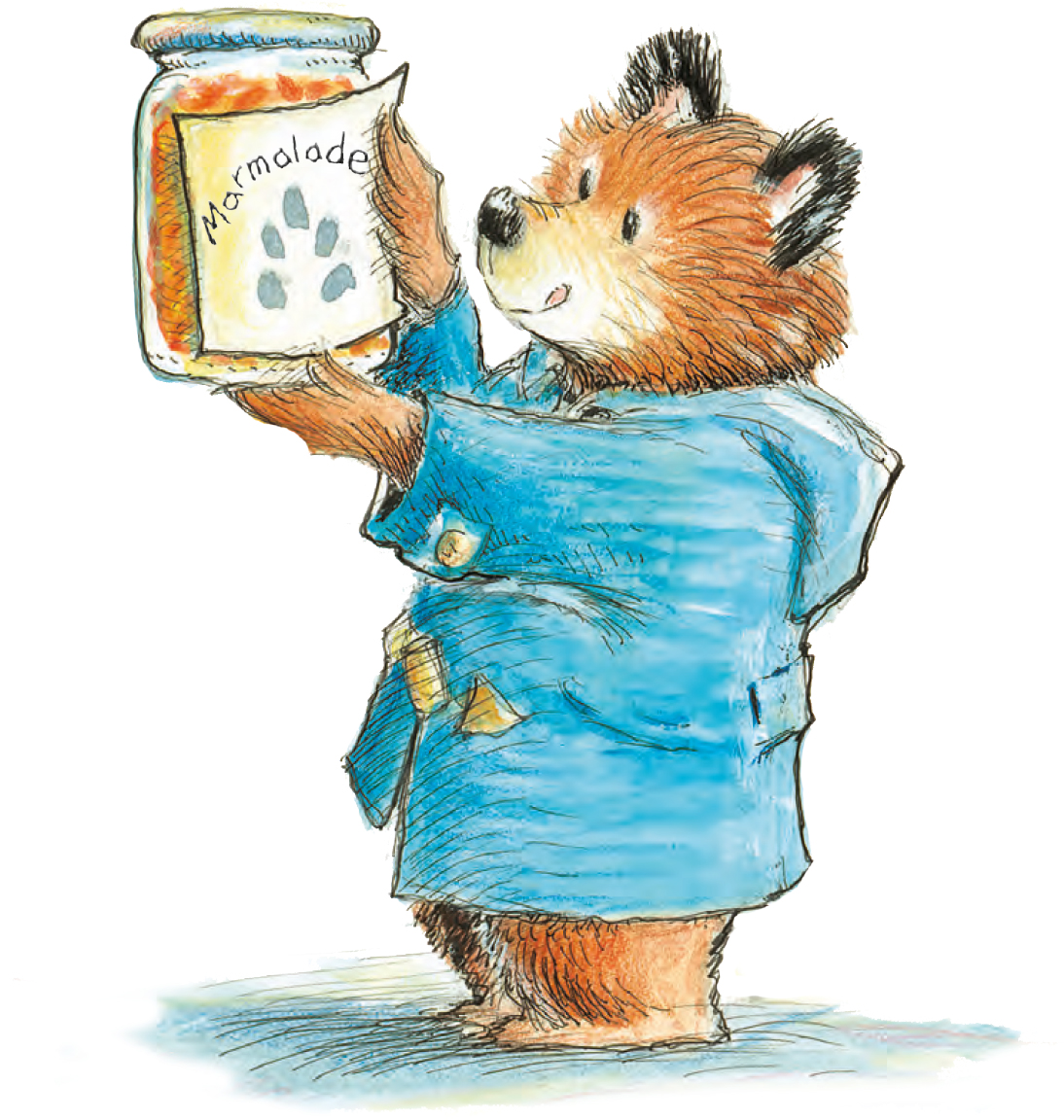
You will need:
small plate
saucepan large enough to hold 1kg (2lb 4oz) oranges and 2½ litres (4½ pints) of water
sharp knife
chopping board
large spoon
lemon squeezer
wooden spoon
ladle
small square of muslin, with string to tie it shut
clean screw-top jars
waxed paper circles
MRS BIRD’S TIP:
It’s best to have as many jars as possible ready and waiting. Too few and you will have a problem on your hands.
Ingredients:
1kg (2lb 4oz) Seville oranges, clean and free of blemishes, with thick, soft skins
1 lemon
2kg (4½lbs) granulated sugar
What to do:
Put a small plate in the fridge.
Wash the oranges and place them in the saucepan with 2½ litres (4½ pints) of water.
Bring to the boil, then simmer until the skins are soft.
Lower the heat and remove the oranges with the large spoon. When they are cool enough to handle, cut them in half.
Remove the orange pips and put them in the muslin square, tying it shut with the string.
Squeeze all the juice from the oranges and add it to the saucepan of water.
Slice the peel into strips as thin or thick as you want.
Add the peel to the saucepan along with the bag of pips (they contain pectin, which helps the marmalade set), note the level of the water, and turn up the heat again until it boils.
Leave the mixture to boil gently for an hour or so, until the contents have been reduced by about a third. After the first half hour preheat the oven to 180°C (350°F/Gas mark 4), ready for the jars.
Remove the bag of pips. Pour in the sugar and bring to the boil again. Squeeze the lemon and add the juice to the saucepan (this will make the marmalade sparkle and help it to set).
Stir the mixture until all the sugar is dissolved, then leave it to simmer.
Wait until the mixture begins to darken.
In the meantime, sterilise the jars by washing them thoroughly in warm, soapy water. Rinse and dry them and put them in the warm oven.
Test whether the marmalade has reached setting point by putting a small spoonful on to the cold plate from the fridge. Leave for a moment or two before poking it with your finger. The surface should wrinkle.
Remove the jars from the oven and use the ladle to fill them with marmalade.
As soon as each jar is full, place a paper disc on top and leave to cool. Then screw the tops on.
I find pouring it through a funnel makes less mess. Mrs Bird bought me one soon after Mr Brown got stuck to the kitchen floor one year. P. B.
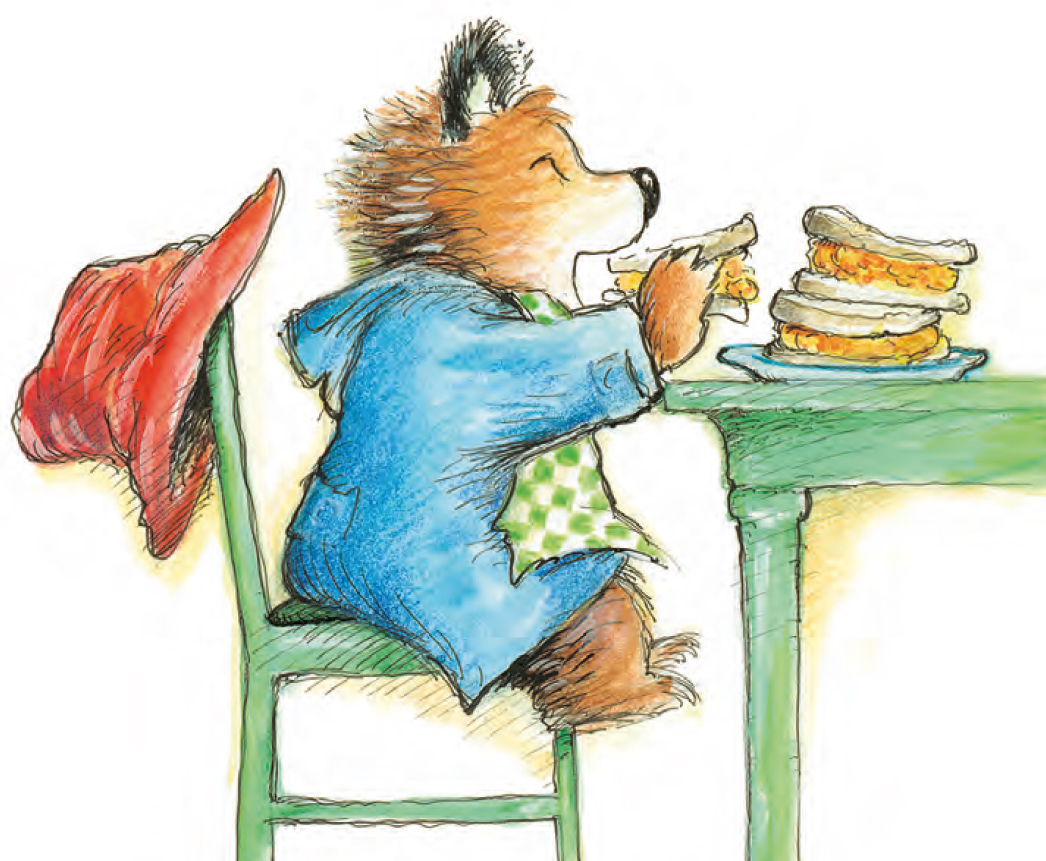
Smoothies
After a hard morning at the stove there is nothing like a smoothie.
Serves 1–2
You will need:
chopping board
sharp knife
measuring jug
tablespoon
juice squeezer
blender or liquidiser
ice cubes
Tropical Pineapple
Ingredients:
1 small, ripe pineapple, peeled, cored and chopped
1 ripe banana, peeled and chopped
2 tbsp coconut cream
1 tbsp runny honey
squeeze of lime juice
Strawberry Bounce
Ingredients:
300ml (10 fl oz) apple juice
100ml (3½fl oz) natural yogurt
1 ripe banana, peeled and chopped
200g (7oz) strawberries
What to do:
For each drink measure out the ingredients, put them in the blender or liquidiser, add a few ice cubes, and process until they are glossily smooth.
If you stop too soon you might end up with LUMPIES, like I did. P. B.
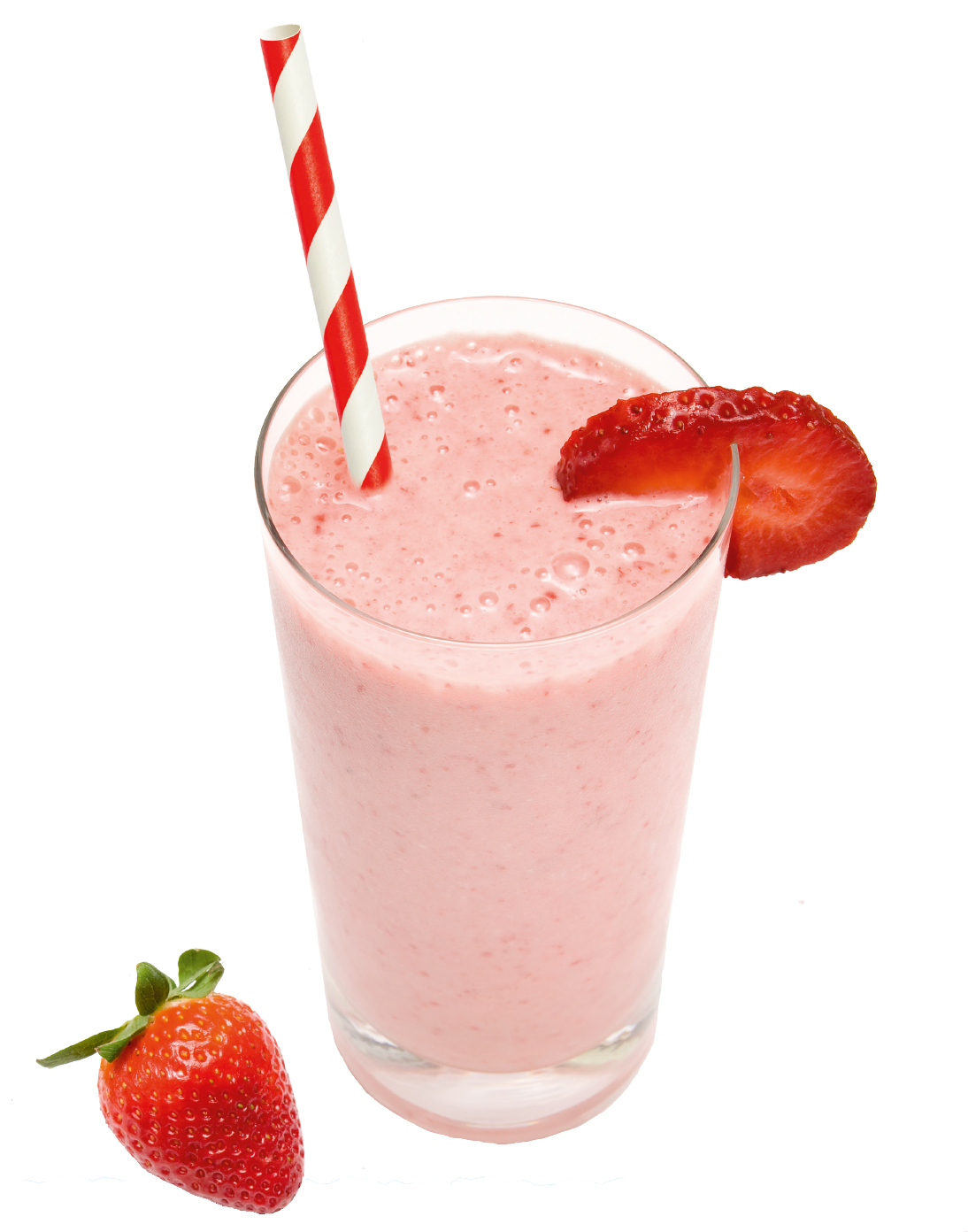
Paddington’s Bargain Splurge
When the traders in the Portobello Market are clearing up at the end of the day they are often only too pleased to accept offers for any leftovers.
Unfortunately there are a lot of other things they are happy to get rid of besides and Mrs Bird has to put my shopping basket on wheels outside because they start to smell.
That’s just one example… and it only costs sixpence! P. B.
Serves2–4
Ingredients:
1 large, ripe mango, peeled and stoned
1 small, ripe melon (or ½ a large one), peeled, seeded and chopped
150ml (¼ pint) orange juice
1 small punnet of ripe raspberries
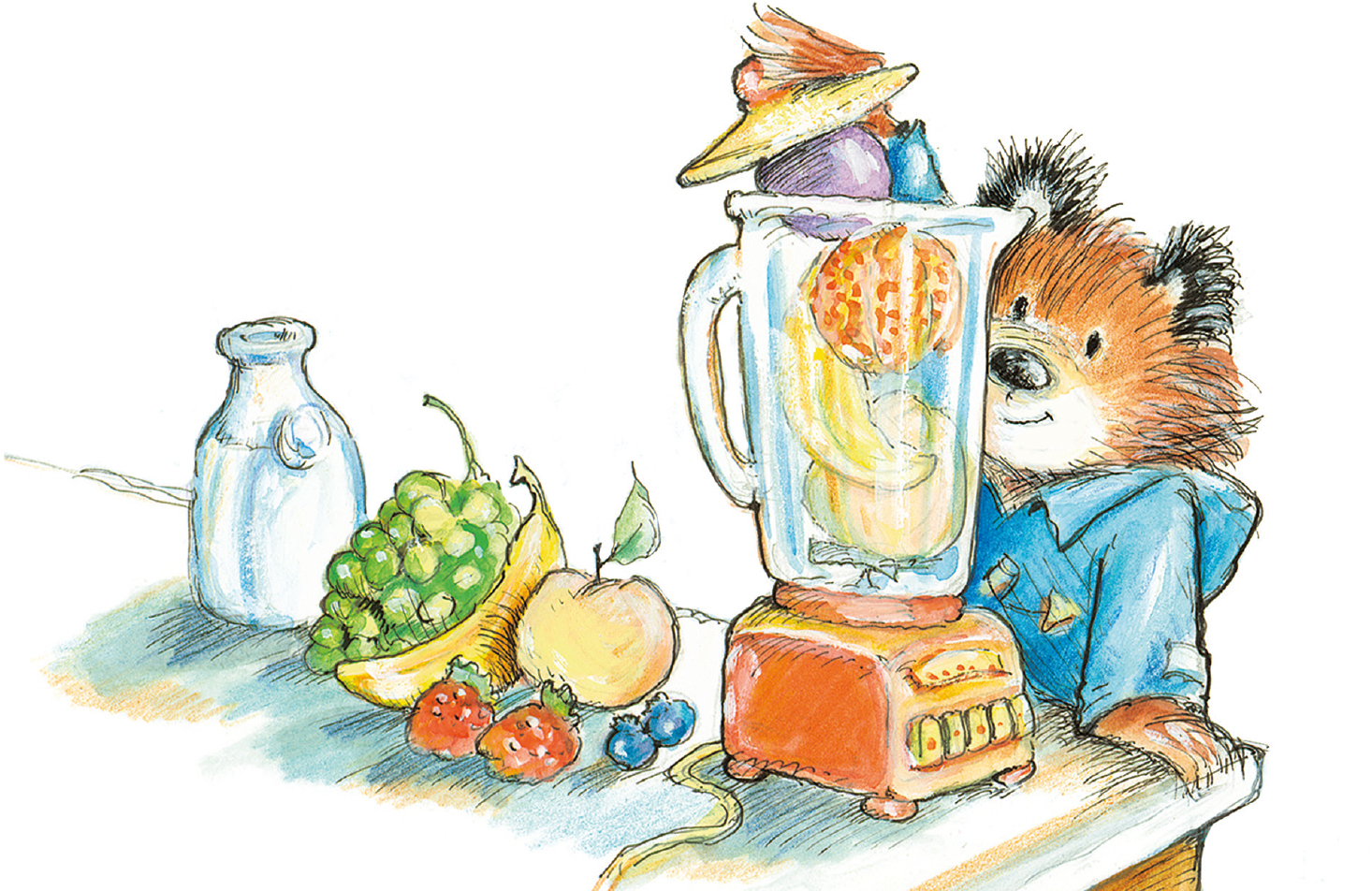
Blueberry Muffins
Makes 12 muffins
You will need:
mixing bowl
another bowl
sieve
measuring jug
whisk
teaspoon
large metal spoon
tablespoon
muffin tray lined with 12 paper cases
Ingredients:
125g (4½oz) caster sugar
200g (7oz) plain flour
2 tsp baking powder
175ml (6fl oz) milk
2 eggs
150ml (¼ pint) vegetable oil
1tsp vanilla extract
200g (7oz) blueberries
What to do:
Preheat oven to 180ºC (350ºF/Gas mark 4).
Put the sugar in the mixing bowl. Sift the flour and baking powder on top.
In the other bowl, whisk the milk, eggs, oil and vanilla extract together until smooth.
With the whisk, make a well in the centre of the flour mixture and beat in the liquid mixture, quickly and roughly. Don’t worry about the odd lump – speed keeps the air in and makes the muffins light.
Quickly fold in the blueberries with the large metal spoon.
With the tablespoon, place the mixture into the muffin cases.
Bake for 30 minutes, until golden brown and risen.
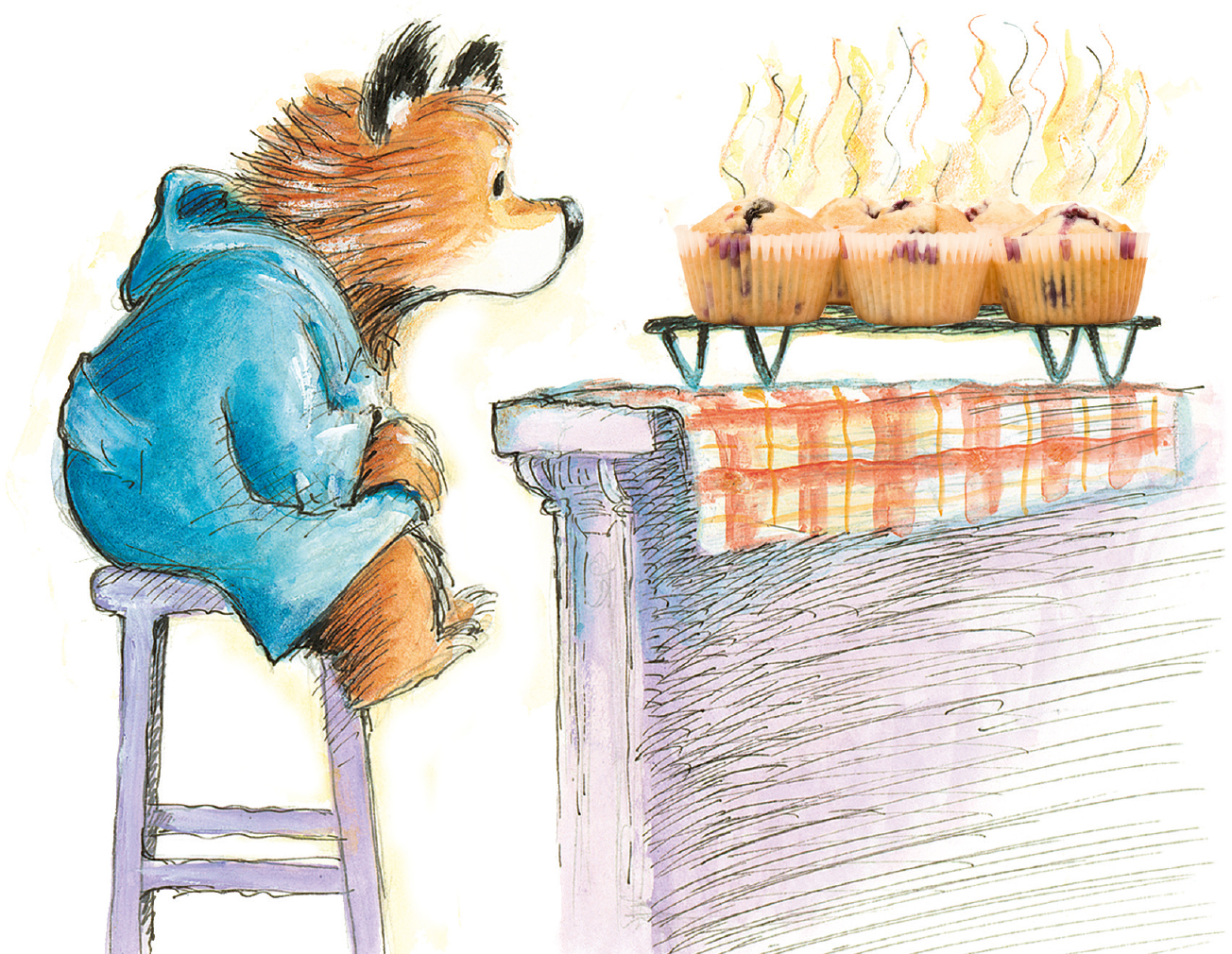
I couldn’t help licking my lips when Mrs Bird took the muffins out of the oven.
“You can try one when they’ve cooled down,” she said. “But good chefs get their pleasure from seeing others enjoy the fruits of their labour.”
I did as I was told, but I couldn’t help thinking I might not make a very good chef.
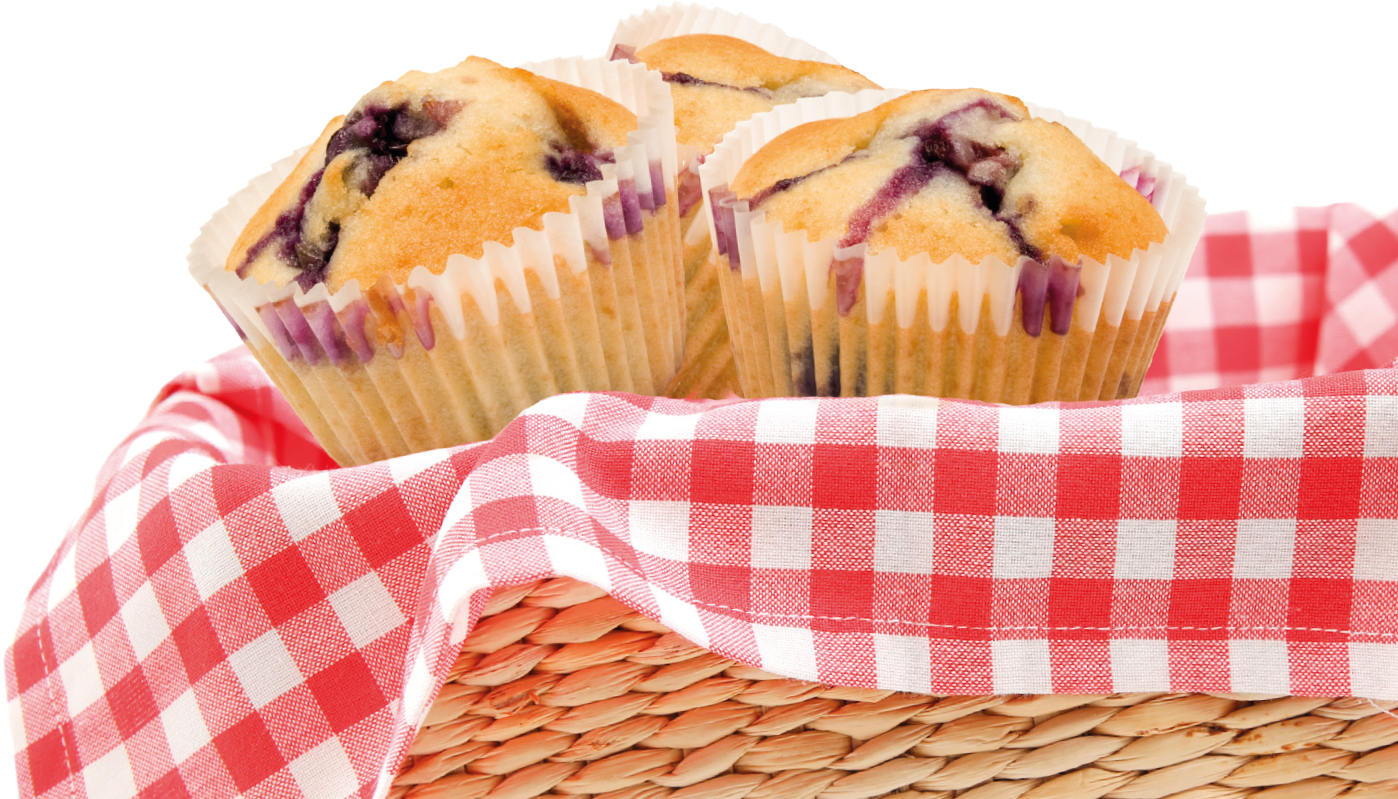
Конец ознакомительного фрагмента.
Текст предоставлен ООО «ЛитРес».
Прочитайте эту книгу целиком, купив полную легальную версию на ЛитРес.
Безопасно оплатить книгу можно банковской картой Visa, MasterCard, Maestro, со счета мобильного телефона, с платежного терминала, в салоне МТС или Связной, через PayPal, WebMoney, Яндекс.Деньги, QIWI Кошелек, бонусными картами или другим удобным Вам способом.




